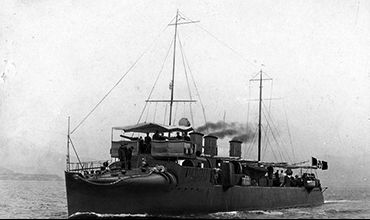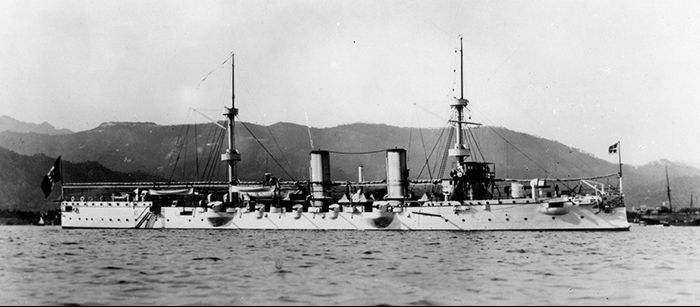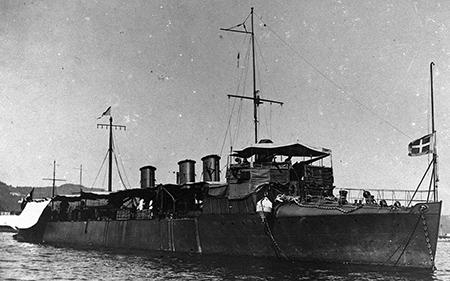The immediate preparation of the Naval Forces and their rapid deployment in the various operating theaters allows us to send over the Suez, in December, the protected cruiser Piedmont and the two modern destroyers Garibaldino and Artigliere (opening photo). Already the December 16 the Italian cruiser captures the auxiliary ship Kayseri, disguised as a hospital ship, actually used for war smuggling. The unit in particular is overloaded with coal and a careful analysis of the documents seized the operators of the Marine Information Department manage to derive the name of a mysterious marina on the coast of Arabia: Kunfida.
 The Garibaldino (photo on the right) and the Artilleryman, engaged in patrolling the coast, meet at the Piedmont cruiser at the Jnnabiyat bank, on the evening of January 6. On the morning of 7 January 1912, moving with skill among the shallows, the two Italian destroyers begin the approach towards Kunfida, crossing numerous sandbanks, almost all incorrectly marked on the maps. At 12:30, just in sight of the goal, they can distinguish the trees and funnels of the opposing units, and they are immediately signaled of enemy fire: the much sought-after Ottoman team of the Red Sea is finally engaged.
The Garibaldino (photo on the right) and the Artilleryman, engaged in patrolling the coast, meet at the Piedmont cruiser at the Jnnabiyat bank, on the evening of January 6. On the morning of 7 January 1912, moving with skill among the shallows, the two Italian destroyers begin the approach towards Kunfida, crossing numerous sandbanks, almost all incorrectly marked on the maps. At 12:30, just in sight of the goal, they can distinguish the trees and funnels of the opposing units, and they are immediately signaled of enemy fire: the much sought-after Ottoman team of the Red Sea is finally engaged.
The two small (415 t) destroyers, supported at a distance, given the seabed, from Piedmont (photo below), face the Turkish units Ajutab and Bafra of 250 t, Ordon, Costamuni, Refakie and Moka of 350 t, Quenkeche and Shipka 500 t, supported among other things by the field batteries of the Ottoman coastal defense.
The effect of the firing of the Italian units is immediately effective and continues until evening: two gunboats are stranded, riddled with shots, two are set on fire, three others are sunk, together with a tanker. The next morning a boarding team from Piedmont captures the only surviving unit, the shipka armed yacht, which is freed and taken to Massawa raising the flag of the Royal Navy. The entire operation is carried out carefully avoiding hitting the areas inhabited by the local Arab population.
The sea domination achieved by definitively destroying the Turkish naval forces in the Red Sea will allow the Navy to support, during the year, the Arab uprising led by Sayyid Muhammad al Idrisi, lord of the coastal region of Asir, against the Ottoman Empire. In 1916 the legendary Lawrence of Arabia will go down in history for having repeated in Aqaba, albeit with a very different hype, those same moves undertaken four years earlier by the Regia Marina and by a very efficient, now as then, Information Department.

Source: Military Navy












